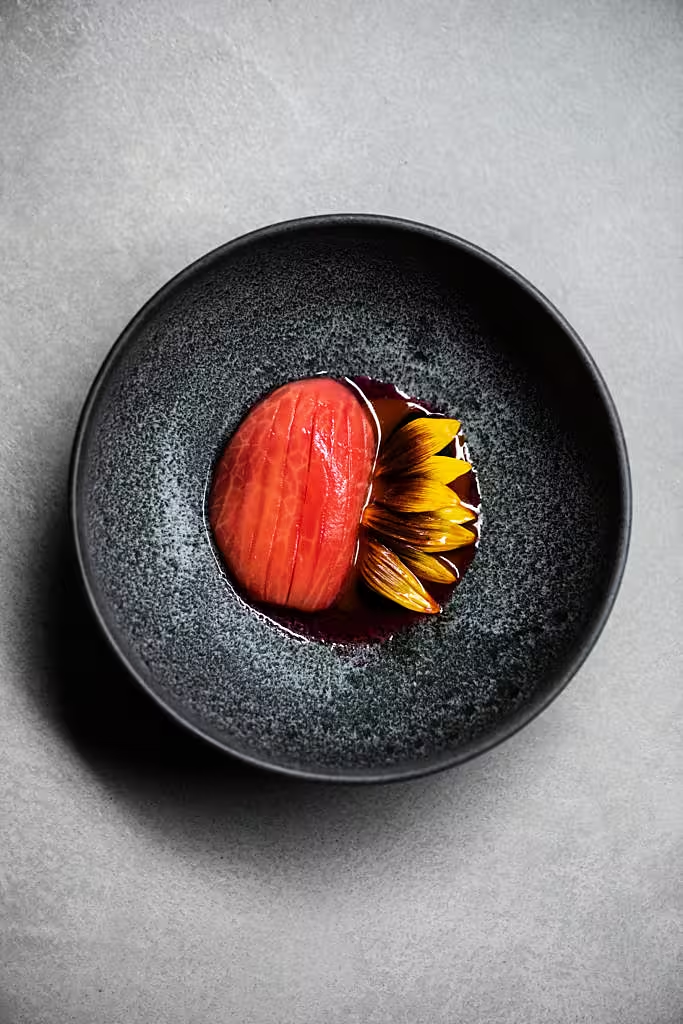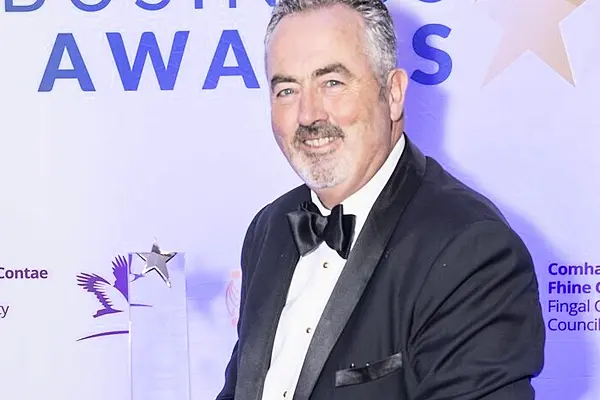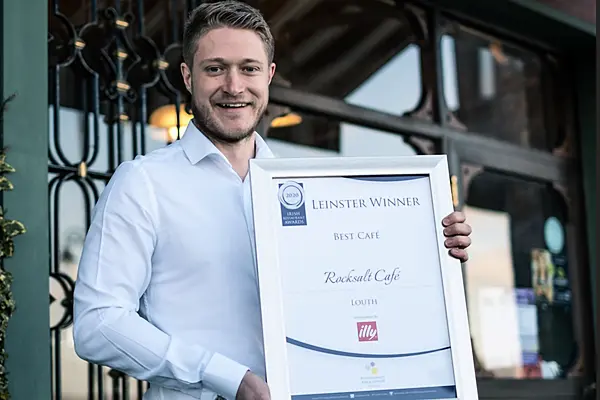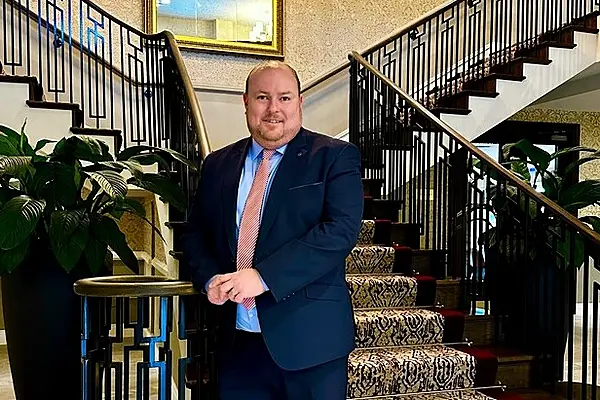Santiago Lastra, head chef at KOL, in London, was awarded his first Michelin star earlier this year, making KOL the UK’s only starred Mexican restaurant. Lastra recently spoke at Food on the Edge, and here he tells Hospitality Ireland about wanting to be a footballer, mathematician and painter until, aged 15, he followed his first recipe.
This article was originally published in the Spring 2023 issue of Hospitality Ireland Magazine, in March of 2023.
Tell us about your background – where you grew up, studied, etc.
I grew up in a small Mexican town called Cuernavaca, south of Mexico City. My hometown was quite urban. I wouldn’t say it has particularly deep links to Mexican culture and heritage.
My professional career started when I was 15. I worked at an Italian restaurant, and my dream was to go to culinary school, but I hadn’t saved up enough money by the time I’d finished school. Once I turned 18, I moved to Mexico City as a chef de partie, which propelled my later studies at the Nordic Food Lab [in Denmark] and roles at restaurants like Mugaritz, in San Sebastián, and Bror, in Copenhagen.
What first drew you to food and cooking?
Growing up, there were lots of things I wanted to be: a mathematician, a painter, a footballer, and a basketball player. I specifically remember a turning point: when I was 15, I went to the supermarket and bought a box of Ritz Crackers. The back of the box had a recipe for a crab dip, so I bought all the ingredients and cooked it at home for my mum, dad and brother – they all approved. I went back to the supermarket the next day and picked up some Italian cooking booklets and went home to cook all the recipes. I was obsessed with the power of food – by cooking something from scratch, you can make people feel happy and nourished. It was then that I told my mum I wanted to be a chef. My mum was very supportive and introduced me to the local Italian restaurant, and I remember my first moment in the kitchen, feeling a sensory overload. I loved the heat and teamwork – everything.
When did you first realise that you wanted to do this professionally?
I continued working in this Italian restaurant. Weeks turned into months, and I decided that I wanted this to be my profession. It wasn’t until my grandfather, father and grandmother passed away in the same month that things changed. This was a very difficult time for me. I refused to go to school and started working at the restaurant full time. Occasionally, I brought ingredients and wine from the restaurant home, to cook for my brother and mother. I considered the positive impact of the kitchen and how it filtered through to my home. I thought, if I can make them happy through my cooking, it’s something I want everyone to feel.
What was your first big role?
In 2017, I met with Rosio Sanchez and René Redzepi. I hadn’t worked at Noma previously, so when I was asked to work at Noma Mexico as a project manager, I was honoured. I was recommended by several different people, but, by this point, I hadn’t made a deal with a supplier before. I didn’t have operational experience, but I had the will, and I think René saw that in me.

What was that like?
I learnt so much. It was amazing – and, of course, demanding at times. The whole experience went by so quickly. It made me proud to be Mexican and to have discovered so much about my country by building connections with small-scale suppliers, understanding the natural resources, and working so closely with René and the team. Tell us about opening KOL. Over the years that led up to opening KOL, I’d hosted guest chef residencies across the world. I’d pop up at festivals like Mume, in Taipei, Postrivoro and Wooding [Wild Food Lab], in Italy, before visiting London, where I hosted dinners at the Tate Modern, Taste of London and Carousel, in Marylebone.
The Carousel pop-up was really formative. I thought to myself, maybe one day I’ll open a restaurant in the same area, and six years later, we are here. I planned to open in 2018. London felt like the right location, as I love the people. It’s a multicultural city with different nationalities, open to bringing different food and cuisines to the table. Then, of course, Covid happened, so we ended up opening our doors in October 2020.
How did you find that?
Whilst frustrating at the time, the delay in opening allowed us lots of time to develop KOL as a brand, and allowed us to cook for people at various locations. I spent months in the lead-up creating and developing hundreds of dishes. Tell us about KOL – the ethos, food, service, etc. The name KOL is taken from the word col, which means cabbage in Mexican Spanish and represents my belief that the simplest things can be made extraordinary if you believe in them. This sentiment extends to all that we do. Our main aim is to bring to life the intricacies, innovation and diversity of Mexican cuisines and the food culture by using predominantly British ingredients.
I don’t think that Mexican food is well represented around the world, outside of Mexico and the US. Mexican food is meant to be made from scratch, using fresh ingredients. KOL is about raising the bar and creating a fine-dining experience that challenges the UK’s expectations and interpretations of Mexican food. Our tasting menu allows us to showcase what we’re working on. We make all of our tortillas and sauces using the freshest ingredients.
We serve a nine-course – Nueve – tasting menu in the restaurant, with the option to request a six-course – Seis – menu during lunch, with optional pairings of wine or mescal. Our wine list is made up of predominantly Eastern and Central European wines. We want to represent these regions that adapt their traditional processes, like Slobodné, who we work very closely with.
We’ve just developed the menu for winter. Dishes include a warming broth on arrival, made up of a crab chilpachole [seafood stew] with mescal; celeriac, chestnut, camomile and orange wine; langoustine taco with smoked chilli and sea buckthorn; and whole grilled octopus, bone marrow, pink fir potato, seaweed matcha and fermented carrot salsa.

What was it like to be recognised by a Michelin star?
It’s amazing to have the recognition after so much hard work and having faced countless obstacles. I have so much respect, love and gratitude for my team that bring KOL to life every day. I’m also so proud of my country. Mexico deserves to be better recognised, and I hope it helps shine a light on the indigenous people, traditional cooks, and family that are my constant inspiration.
In what ways are you changing perceptions around Mexican food?
at KOL, I want to share my personal memories of Mexico, crafting moments through flavours and techniques. We have a list of Mexican ingredients that we break down, based on flavours, and build them back up using replacement ingredients. We use sea arrowgrass, which is like coriander, but better, and bell peppers with elderflower and kombucha to create mango. Instead of avocado, we use pistachio that we blend with roasted garlic. Instead of banana leaves, we use chestnut leaves to make tamales. all fresh produce we source within the UK – Cornish crab, halibut, British caviar, beetroot from Oxfordshire, rhubarb, gooseberries. We take these ingredients and dress them as if they were Mexican.

What makes a great restaurant?
A restaurant with integrity, grounded by research and understanding of the produce surrounding it. I think a great restaurant gives back to communities in ways that we can. At KOL, for example, the only ingredients that we source outside of the UK are chilli, corn, coffee and mescal, sourcing these ingredients only from independent producers in Mexico.
What are the changing trends in hospitality – people’s expectations, new elements, etc.?
I think that restaurants are redefining fine dining. At KOL, we are remoulding the notions that it should be stiff or uncomfortable. We provide something a little more relaxed, serving refined Mexican food. The interiors recreate the atmosphere of a traditional, warm Mexican home, with crafts from different Mexican collectors, such as Raiz and artefakto. The interiors are balanced with contemporary accents and terracotta walls, which are textures similar to traditional haciendas in Yucatán. Ultimately, we want people to leave feeling happy, and with a richer understanding of Mexico.
What are the major challenges at the moment?
Staff shortages, retention, and the cost-of-living crisis. We are lucky to have such a loyal team and customer base.
What are the main opportunities?
The hospitality industry is incredibly resilient and resourceful. The door is open to new talent.
Do you think that the pandemic has changed what we look for in hospitality?
Yes, absolutely, but I think that we are rebuilding. Restaurants are platforms for supremely talented chefs and floor staff to showcase an experience, and I think that people are beginning to understand the value of unique dining experiences.
Any other plans on the horizon for the next year or so?
We are constantly looking towards the future by researching, developing and strengthening relationships. We are striving for KOL to be the best restaurant it possibly can be.
KOL AT A GLANCE
How many covers (lunch and dinner)? 56 for the dining room (ground floor), with an intimate chef’s table dining room and the KOL Mezcaleria bar downstairs.
Number of staff members (front and back of house)? 18 back of house; 25 front of house.
Signature dishes? Nicotole butternut squash, chiltepín, British caviar; langoustine smoked chilli, sea buckthorn taco; grilled octopus, bone marrow, pink fir potato, seaweed matcha and fermented carrot salsa served with condiments and fresh tortillas (to share).
Lower Ground Floor, 9 Seymour St, London W1H 7BA, United Kingdom
Read More: Hospitality Ireland Spring 2023: Read The Latest Issue Online!








